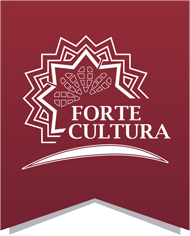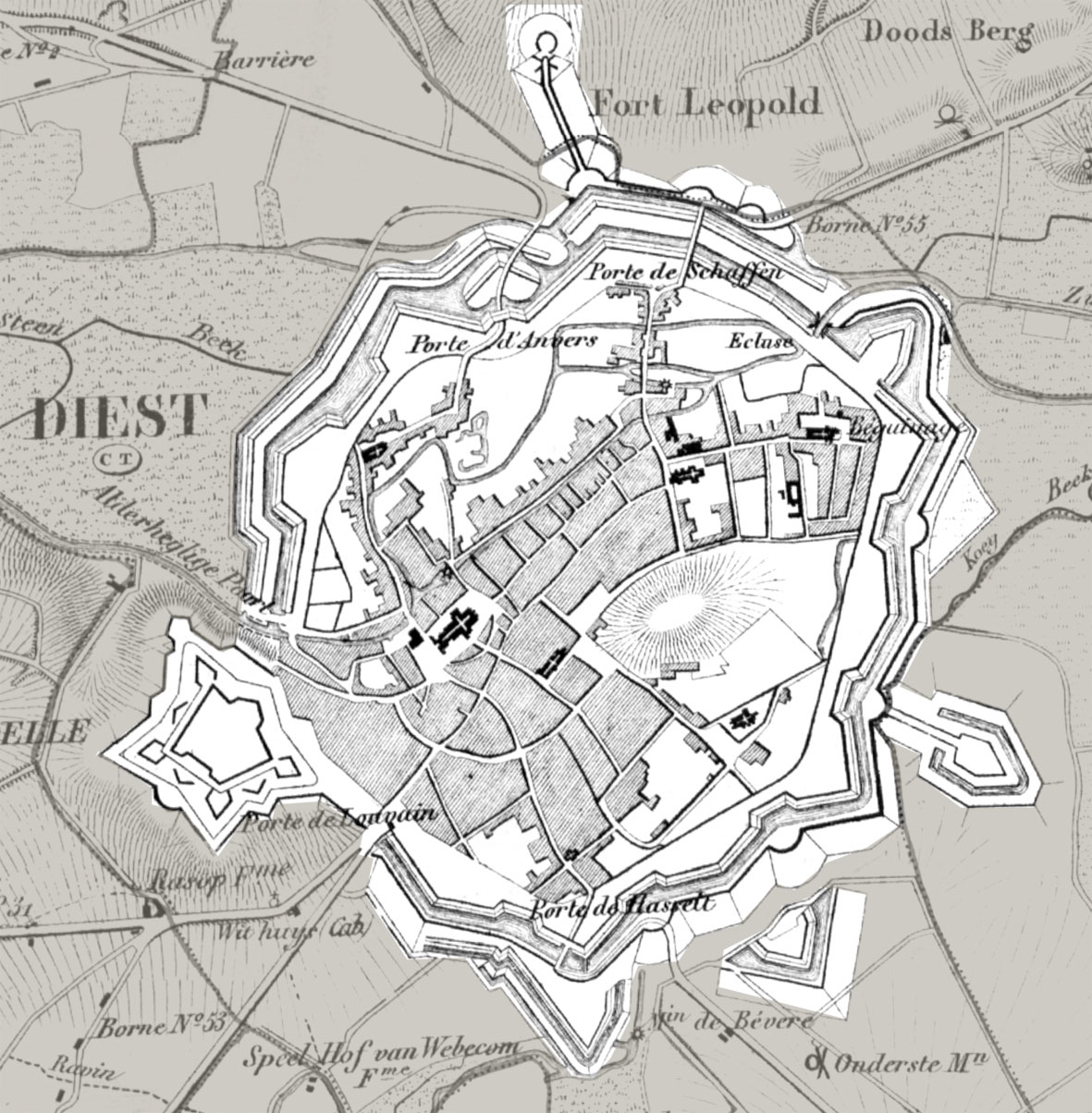The city Diest looks back on changeful history, shaped by many conquests and destruction. The medieval city fortification offered protection but also kept awaking greediness. Only in the “long” 19th Century the modern city fortification was built with an imposing citadel to protect the then young Belgium.
Big parts of the fortification elements are still there today and offer an interesting experience for visitors. Discover great fortification architecture in the Orange city Diest with FORTE CULTURA. Let yourself be inspired by a special mix of patrician houses, military fortress and modern life during your stay.
FORTE CULTURA Travel Recommendations
Experience World
Citadel
The citadel Diest is the only remaining brick stone citadel in Flanders. It is built as a pentagon (each side 190m long) and surrounded by dry trenches. Built between 1845 and 1853, it completed the defence works of the fortified city Diest. The bluestone gate neo-classicist-style is worth seeing as much as the integrated Chasseloup Laubat defence system; the last system of its kind in Europe. Today it accommodates an interesting modern art exhibition and a museum of Belgian paratroopers who were stationed here until 2011.
The round fort was built from 1841 to 1845 on a strategically important location on a hill 400m in front of the city. For one in order to avoid an enemy occupation and therefore a bombardment of the city, but also to protect the northern city wall from enemy attacks.
During the first and second world war Fort Leopold was used by the Germans. In between a French tried his mushroom and fruit cultivation in this military object. Today the Fort is unused and can be visited on guided tours. Once a year on November 11th there is an open house day.
The Schaffense gate is one of the oldest city gates of Diest and was already part of the medieval city wall. It obtained todays’ form during the city fortification from 1835.
Tour Offers and Information
Toerisme Diest
The tourism agency Diest offers wonderful thematic tours through the city and its diverse history. From the citadel to Fort Leopold, with the night guard through the city or “Diest from top to bottom”, there are many offers and even a game of citygold can be booked.
Wandelen in Diest
Map
Monument and History
History Grain and cattle markets, the textile industry and the brewery lead the city and region Diest to prosperity in the Middle Ages. Allocated to house Oranien-Nassau in 1499 by barter trade, Diest was often plundered, besieged and destroyed, four times alone in the Eighty Years’ War between Spain and the Netherlands.
Matthäus Merian described the cities’ defence installations in his “Topographia Circuli Burgundici” in 1654 as follows:
"...Es habe die Statt / wie sie jetzt in der Ringmaur begriffen / in ihrem Umbkreiß / was einer innerhalb einer Stund herumb gehen könne / 4. grosse / vnd so viel kleine Thor zu den Wiesen. An der Mauer stehen über die 30. Thürne herumb / deren einen man auff etliche tausent Schritt sehen könne / darauff stetigs ein Wächter gehalten werde..."
In 1795 Diest was given to France, from 1815 to 1830 it was Dutch.
Only in 1835 a decision of the young Belgian government lead to the building of today’s strong fortifications to defend the new independence to the North.
Further information about city history of Diest.
Architecture Besides the imposing, five-pointed brick stone citadel, the three-piece fortification of the once Orange city Diest includes the U-shaped Fort Leopold and the city fortification with a double ground wall and canals which a third of is well-preserved. Big parts of the fortress built from 1837 are in good order and a great example of military architecture of the mid-19th century.
Further information
Nature A great way to discover the parts and outdoor facilities of the fortified city Diest is by foot or by bike. Along the small river Demer or cross-country often combined with small insights and big views. Who wants to touch and feel the nature can start in the yearly “Gladiator Run”, a challenging parkours around the citadel Diest.
Partner



